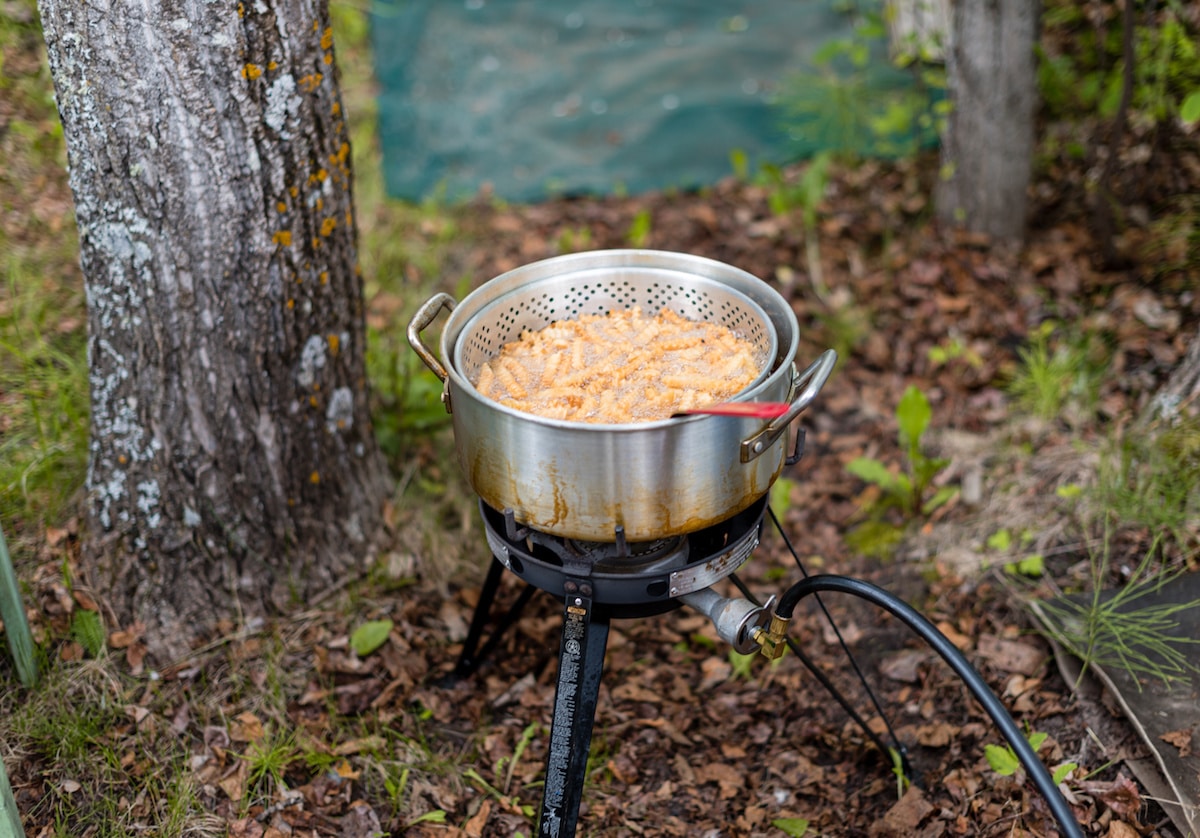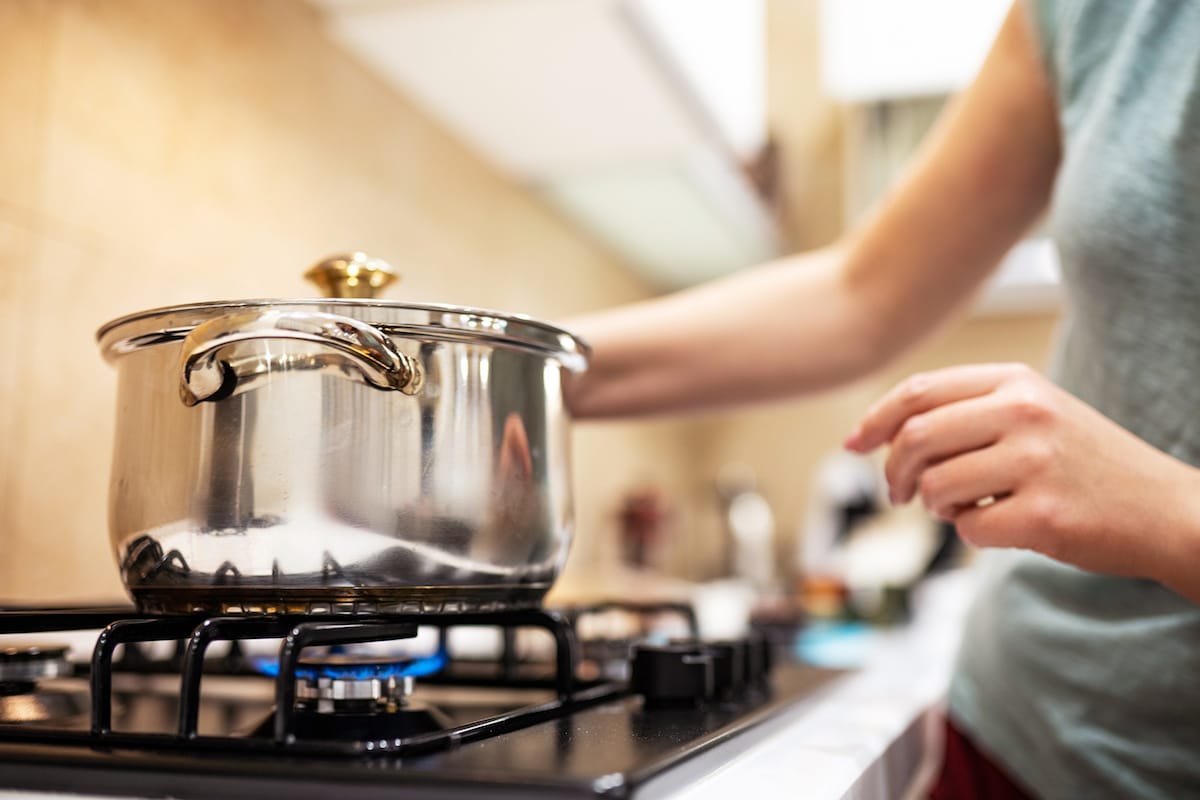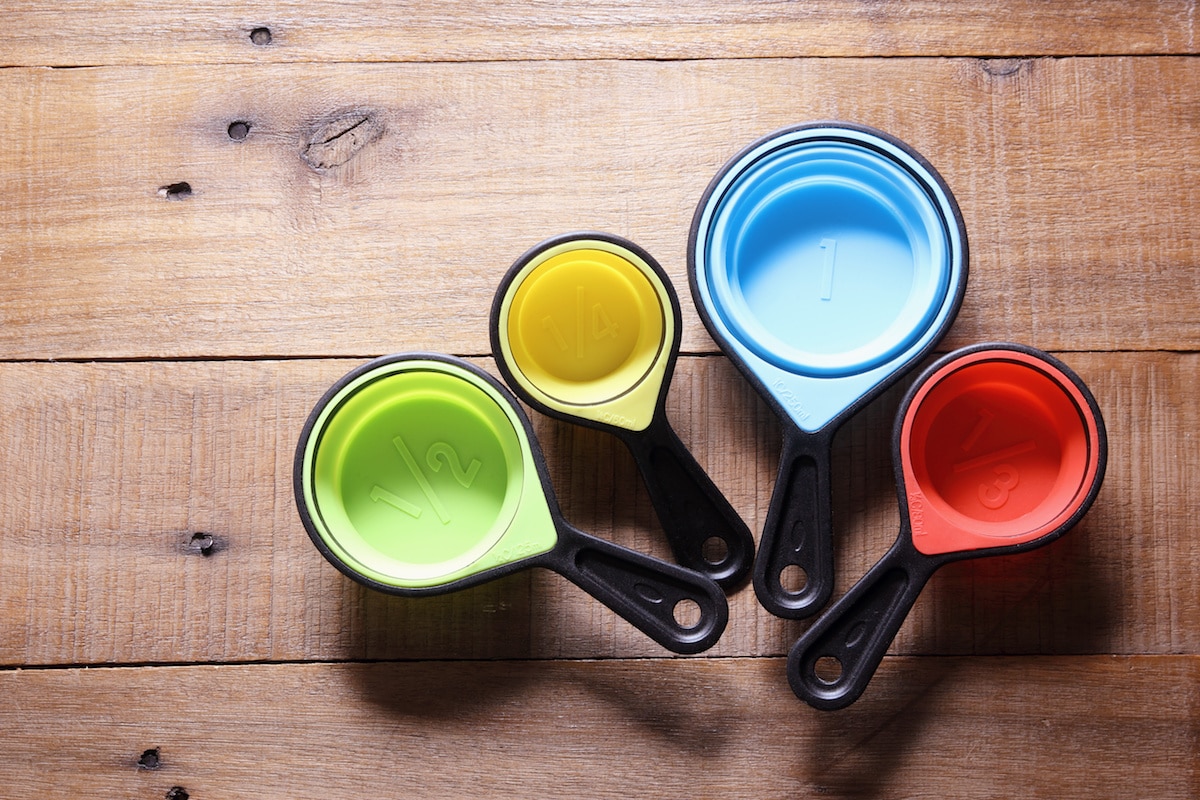Life on the road or in the great outdoors is significantly improved by a good meal…or five. Whether you are traveling solo or with the entire family and don’t plan on foraging for food in the wilderness, well-balanced meals provide the energy necessary for a day of adventuring.
What We'll Cover
A solid camping kitchen setup will help you cook your favorite meals with ease. By lessening the time needed for meal prep and cleanup, you increase the likelihood of making your own food and lowering bills for prepared meals when your taste buds are flaring.
Many of the items you need for a camping kitchen are affordable and easily incorporate into the travel budget. Some can also pull double duty back at the ranch. With an investment in quality, you can expect years of use on many trails.
Most importantly, a well-outfitted camping kitchen amplifies the camping experience. When you are able to spend more time in the wild between trips for supplies, you are better able to enjoy your time in the outdoors.
For Cooking
Cooking necessities expand far beyond meal planning to include all the necessary prep supplies — preferably in a compact and reusable form.
Camping Stove and Fuel
Unless you live on a raw diet and eschew hot beverages, a propane camping stove and fuel should be the first major purchase for the camp kitchen. A basic propane camping stove or a campfire-based option are the best bet for many campers.
Propane Options
Propane stoves are generally offered in one or two-burner options. The burners connect to accessory propane tanks by a hose and valve setup. Prefilled tanks as small as 16.4 ounces can be purchased at many major retail and sporting good stores.
Larger tanks, such as 20 lb., 30 lb. or 40 lb. can also be purchased. For campers, 20 lb. tanks, also known as five-gallon cylinders, provide a compromise between size and cooking time. These tanks can be refilled at propane suppliers, farm supply stores and camp stores.
If you plan on cooking stews, soups or chili — basically anything that requires a longer cooking time — you need a larger tank to stay at the campsite longer. Avid foodies also need the cooking flexibility afforded by a five-gallon cylinder.
A couple of disposable cylinders are fine, however, for most stovetop cooking needs over one weekend. Think hamburgers, heated foods and basic skillet breakfasts.
Over-the-Fire Cooking
When camping outside of established campsites, consider investing in an over-the-fire campfire grill grate or campfire tripod for cooking. Whether you use it to augment a propane stove or as your only means of cooking, a grate provides a stable surface for heating multiple pans and food items.
An important consideration when using a camping wood stove for heating food is to gather firewood locally. Many states and most parks have prohibitions regarding the importing of outside wood. Check all local regulations before starting the fire.
Pots, Pans and More
The pots and pans you need are largely determined by the types of foods you prefer to eat on a camping trip and your cooking rig.
If you prefer to cook a communal chili and ladle out a meal for the entire family, opt for a large boiler, stovetop Dutch oven, or camping oven for most of your meals. Add a smaller saucepan and a skillet to brown your meat or veggies and call it a day if you want a streamlined operation. A smaller saucepan can be used to heat water for hot beverages, such as cocoa or tea. Add a camping kettle if you expect lots of refills or plan on brewing coffee outdoors.
For over-the-fire cooking, cast iron cookware is a must. Add large tongs or heat-resistant gloves to the kit to ensure you can safely remove your pans from grates above the fire.
When you are flying solo, opt for smaller saucepans and skillets for your cooking needs, and maybe leave the camping griddle at home. The smaller surface area means faster cooking, quicker cleanup and more compact storage. These can also be useful if one or more of your party has dietary restrictions, as a personal skillet can prevent cross-contamination for gluten-free campers or people with allergies.
Pot Holders
In addition to the special supplies for over-the-fire cooking, even a propane stove set up needs pot holders. You need to safely remove your food from the stovetop and have an insulating surface to place hot pan bottoms on for serving. By using pot holders for both purposes, you ease your storage needs. Take at least two pot holders per pan with you in case of spills.
Cooking Utensils
Cooking utensil basics include spatulas for your meat, pancake and egg-flipping needs. Opt for a wood or bamboo spoon or a rubber spatula for stirring in a saucepan. These same spoons can be used for mixing during meal prep to lessen your load.
Tongs and meat skewers are great for open-fire cooking or roasting in a roasting pan and can pull double duty with a stovetop set up.
Specialty items, such as whisks, can be added if you plan out your meals in advance and can justify the need through repeat uses. Otherwise, consider if you need the item or another utensil can take its place. For example, a fork can whisk eggs well enough for most cooking needs. You may be able to purchase a camping utensil set so you don’t have to purchase the pieces individually.
Specialized Camping Utensil Kits
If you want to build a camp-specific utensil plan, consider a specialized camping utensil kit. These kits contain a compact variety of utensils in a compartmentalized bag. Many utensils are multi-purpose or feature dual ends to provide two utensils in one tool.
Other kits delve into cooking niches. Are you are a gourmet taking your act on the road? There are kitchen sets for you that incorporate whisks, camping spice containers, and more. BBQ lovers can also find similar sets tailored to their needs, or you can build your own by seeking out compact or multi-use options for your favorite cooking utensils.
Knives
If you are cooking meat, take a large chef’s knife if you need to cut a chicken or larger cuts of meat. You also need to take a few smaller steak knives for eating. The best camping knife sets include sharpening cases to keep the knives safe and sharp between uses.
A medium-sized chef’s knife with a cutting board case is a solid option for slicing veggies and other food items and includes a built-in storage solution. Also shop for a multi-purpose knife with a built-in corkscrew and other basic utility tools to avoid being left with a bottle of wine and no way to open it.
Cutting Boards
Make sure you use separate cutting boards for your veggies and raw meat to avoid cross contamination. No one likes to have a camping trip interrupted by food poisoning. This may mean additional weight in your gear, but it is a safety necessity.
Some knives can be purchased with cutting board cases or as a set. These are great for safe transport and convenience. Opt for smaller cutting boards when possible to minimize your packing needs.
Equipment for Brewing Coffee
There are a number of different supplies that can help campers brew great coffee in the outdoors. Depending on your preferences, however, you may need to bring some different coffee equipment to the table. Here are a few different pieces of camping cookware you can bring depending on the kind of coffee you like:
- Camping espresso makers
- Travel french presses
- Camping coffee percolators
- Travel coffee grinders
For Eating
When the dinner bell rings, have these utensils ready for a great time.
Dishes and Utensils
When it’s chow time, every person in your cooking party needs a spoon and fork, bowl and plate and a cup and/or camping mug. Some of these items can easily pull double-duty to minimize your kit needs..
For example, some combo utensils feature a 3-in-1 camping spork, with a fork, knife, and spoon or a dual-end configuration. A bowl made with a wider base can serve as a plate, or a plate with a high edge can take the place of a bowl in many instances.
Camping mess kits are also a compact option for camping and ensure everyone has their own essentials. A bowl or plate base may feature snap-on utensils, or a compact bag will hold all the basics for one person. Larger mess kits even include basic cookware if you want to travel light and conserve space for a weekend of hiking or biking to campsites.
Napkins
For ultimate space and environmental conservation, reusable napkins are your best option. However, one solid mess may necessitate a wash-and-dry session with your camping sink. If your fresh water is limited, you could end up in a pickle.
Consider packing a few reusable napkins per person and disposable paper towels. These can pull double-duty as napkins while also cleaning the occasional mess. For the compact traveler, compressed paper towel options are available. Add water and it expands to a full-size functional paper towel you can use for cleaning.
Tables and Chairs
A camping table is your best bet in the wilderness. Even if you plan to use established campsites with picnic options, you may want to get away from the crowd or stake your claim in the shade. Choose a sturdy option that can pull double-duty as a meal prep station and serving headquarters.
Avoid packing separate chairs for the dinner table and use your standard camp chair for meal time. If you use a heavy-duty camping chair, you may minimize the need to bring more than one chair. Opt for a collapsible version to save space in the car and for convenient storage when you return home.
For Storing
It’s important to store your food to keep it safe. Nobody wants animals to get into their food, and nobody wants to get food poisoning because their rations spoiled after being stored wrong.
Coolers
Investing in a heavily insulated camping cooler will not only help keep your food cold for longer. It also helps minimize your need to purchase fresh ice or refreeze ice packs to refresh the cooler. The best camping coolers come with a higher price tag, so take into consideration how long you plan on staying remote when making your decision.
If your cargo space allows it, consider one cooler for food items with more sensitive temperature needs, such as milk, eggs and meat. Pack another for items you only want to stay cold or plan to access regularly — think drinks or quick eat options. You may even invest in an outdoor refrigerator, especially if you’re using an RV.
Plastic Bags and Tupperware
For more conservative camping, consider using mesh bags and reusable totes when possible for transport needs. However, plastic bags can be a necessity for safe food transport, disposal, and easy separation of dirty and clean items. Opt for a biodegradable zip-seal option to minimize your impact on the planet.
Tupperware is a big plus for camping, particularly if you never lose your lids. For a camp cook who wants to spend as much time on the trail as possible, consider precooking some meals and freezing them in properly rated plastic containers. When it’s time to cook, you will be ahead of the curve. The containers can also double as serving dishes for heated food or a personal bowl.
Tupperware is also needed to store any opened or scented food items to keep unwanted animals out of your campsite. When meal time is over, store any leftovers in an airtight container until you can safely dispose of them.
Garbage Bags
Garbage bags are essential for camping. Opt for odor-neutralizing bags in order to minimize the scent from your food waste. Consider purchasing bear bags to store and suspend your garbage bags in until they can be safely disposed of away from the campsite. Even if you are in an area without bears, this helps keep your food away from other land-based scavengers.
Camping Kitchens
The best camping kitchens provide a combination cooking surface and counter area. They can be used in conjunction with a propane stove or serve as an accessory to campfire cooking.
With foldable counter expansions and multi-level storage, they are handy for set up for individual meals only or to leave ready to go for multiple days of cooking. Keep in mind the setup will need to be cleaned and sanitized after each prep to remove cooking odors. You can augment them further by adding a camping kitchen organizer for increased storage.
Cleaning, Storing, and Disposing
In order to keep bugs and animals out of your campsite, make sure you have the equipment to safely store your food.
Cleaning Up After Cooking
Pick an environmentally friendly, biodegradable dish soap to clean up after every meal. You need to eliminate the smell of food on all of your cooking gear and surfaces to avoid attracting animals. If you are camping near your automobile, pack your clean cutting boards, skillets and pans away in an airtight container in the car while you are sleeping.
Store your used scrubbing tools, such as a dish cloth and sponge, in a plastic odor-free bag. Also store your potholders and any other cooking accessory capable of absorbing odor in a shut container and store the containers at least 200 feet away from your tent.
Storing Your Food
Use your tupperware containers to store any prepared food and store those containers within a cooler or airtight container. Place those containers in your car at night when possible or store away from the sleeping area. Note: pet food needs to be stored the same way as human food.
Bear Canisters
In areas with bears, bear canisters are used to store all food items, including garbage, away from the campsite. These provide an odor-barrier and are also tamper-proof for nosy pests.
Despite the added barrier these canisters provide, they still need to be secured a safe distance from your sleeping quarters.
Disposing
Keep all of your trash, including unused or leftover food, safely sealed with you until you reach a camping area with dumpsters. Read all posted signage to ensure you can dispose of food items or non-food items in the dumpsters before discarding your garbage.
Conclusion
Cooking for camp can be a lot of fun and keep you and your family a lot healthier on the road. With minimum essentials, you can prepare an affordable, tasty meal or scale up for a gourmet experience as your cargo space and back allows.
The responses below are not provided, commissioned, reviewed, approved, or otherwise endorsed by any financial entity or advertiser. It is not the advertiser’s responsibility to ensure all posts and/or questions are answered.





